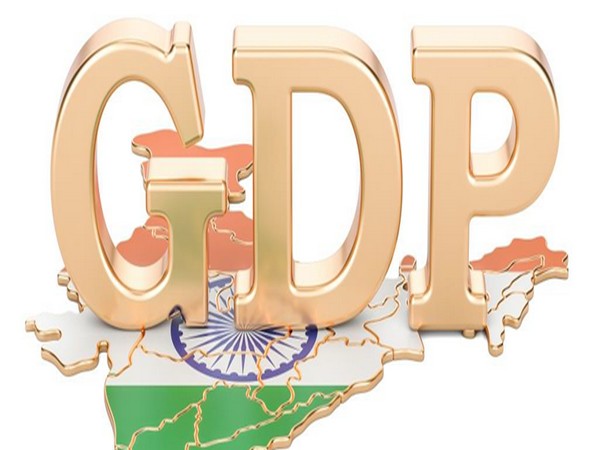


India has come a long way from being one of the five fragile economies that it was until the mid-eighties to becoming the fifth largest economy in the world with a GDP of $3,385.1 Billion. It has surged ahead of the United Kingdom, which is now reconciled to the 6th largest economy with a GDP of $ 3,070.7 Billion.
India is poised to become the third-largest economy in the world by leaving behind Germany, the 4th largest economy with a GDP of $4,072.2 Billion, and Japan, the 3rd largest economy with a GDP of $4,231.1 Billion).
India can overtake China, the second-largest economy with a GDP of $ 17,963.2 Billion, 5.31 times the size of India’s economy. Gautam Adani has also predicted that India will become the third-largest economy by 2030 and the 2nd largest economy by 2050.
By the time India celebrates the 100th year of its Independence, it is expected to become the largest economy in the world, leaving behind the United States (US), which has a GDP of $25,462.7 Billion, 7.5 times larger than India’s. Mukesh Ambani has predicted India’s GDP to be $40,000 Billion by 2047.
At the same time, post-independence, India had become the fifth-largest economy in 1996, albeit in terms of Purchasing Power Parity (PPP). All the more significantly, it rose to the fourth position in 2004 to become the third-largest in 2012 to become next only to China and the US.
Since then, India may have remained in the third position, but its GDP has kept rising to 10,057 Billion (Constant 2017 International $) and 11,870 Billion (Current Internation $) in 2022.
Economists believe GDP expressed in PPP terms at the current and constant international dollar provides a better measure to compare economies. It minimises distortions caused by the exchange rate differences. It is difficult to understand why is this approach to measuring GDP should be out of favour.
India must take pride in having become the third largest economy of the world become the third-largest economy in the world and has been able to sustain at that level since 2012.
India has everything it takes to become the largest economy in the world – abundant natural resources, demographic advantage, a highly qualified talent pool, and an ability to attract global capital. It must only ensure peace and harmony, and prosperity will surely follow.
India has been a developed nation for a long time, by the standards of the time. It was one of the two largest economies in its ancient and medieval past. Until the end of the 16th century, India’s contribution to the world GDP ranged between 35 to 25 per cent.
After the industrial revolution and during colonial rule, India rapidly lost its place in the world economy. By the time we won our freedom, India’s share in the world GDP had declined to an abysmal 4%.
Currently, India accounts for 17.76% of the world’s population, whereas its contribution to the world’s GDP is about 8.7%. Allowing for changes in the base year and informal economy, its contribution could increase to 9.3%. Morgan Stanley predicts that India’s contribution to the world’s GDP could rise to 16% by 2023-24.
GDP in PP International Dollar may be a better measure to compare and rank economies by the size of their economy. Some may consider it a better indicator than the GDP in absolute dollar terms. What could be critical is to know the extent to which individuals of the nation have become better off.
In 2022, Norway had a GDP of $579.3 Billion, just a sixth the size of India. However, its per capita GDP at current prices was $106,149. Many high-income countries in the world are not reckoned amongst the top ten or twenty, even the top one hundred, by the size of their GDP but are among the richest on the basis of their per capita income.
It is on this count that India fairs rather badly and has to cover a long distance. The per capita GDP of the country at current prices is still no more than $2,389. By this measure, India is ranked quite low and is classified as one of the low-income countries.
Presently, our per capita GDP is significantly lower than many countries that used to be poorer than India. These include For example, Bangladesh ($2,688), Philippines ($3,499) and Vietnam ($4,164). The GDP of these countries is around one-eight of ours.
Reliable projections indicate that by 2047, India’s population will be around 1.65 Billion. If the prediction of India’s GDP being $40,000 Billion comes true by then, we can hope to have a per capita income of $24,000.
This would truly be the Amrit that India deserves to cherish by the end of the Amrit Kal, if not before. It is hoped that India will be a full-employment economy by that time, and everyone in the country will be working towards self-actualisation.
Simultaneously, India must proactively target to correct distortions in income and wealth distribution. Committed to an egalitarian society, it must be a matter of huge concern for the country that the wealthiest 5 per cent of its population presently owns 60 per cent of its wealth.
Conversely, it is all the more disquieting that the bottom 50 per cent of the country’s population has to do with only about a 3 per cent share in its wealth.
While it is no one’s case that the country must abhor the rich or their propensity to work hard to become richer and wealthier, the rapid rise in the number of dollar billionaires in the country must also coincide with a reasonably respectable, if not proportionate, rise in the income and wealth of the masses.